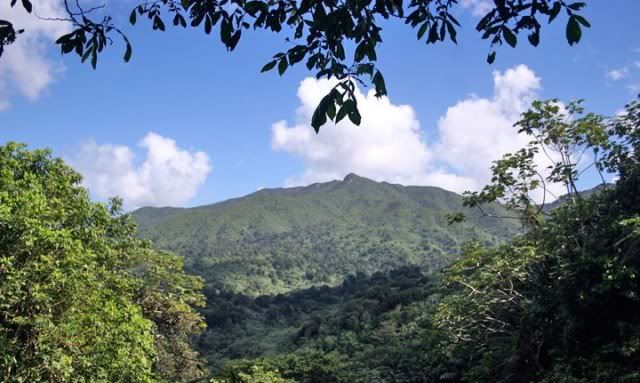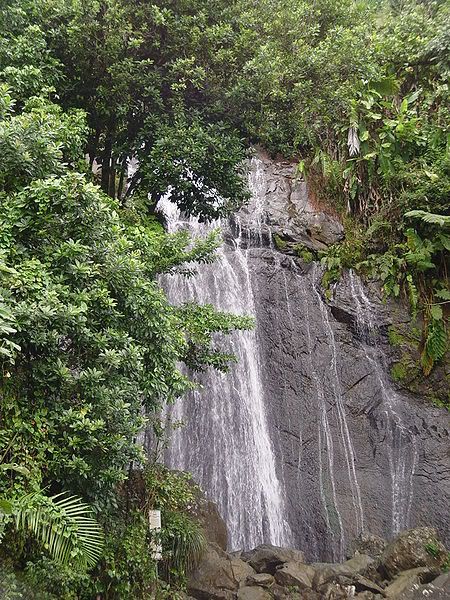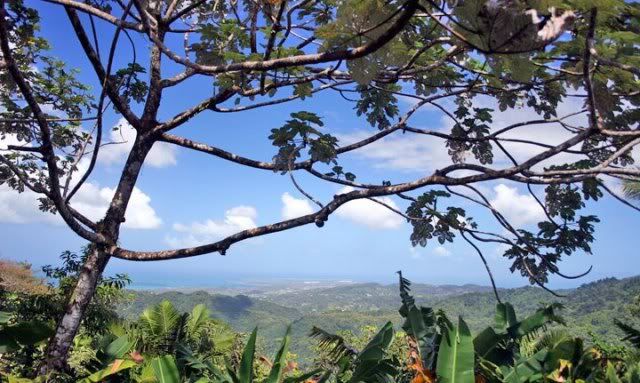El Yunque National Forest, formerly known as the Caribbean National Forest, is located on the island of Puerto Rico in the Sierra de Luquillo Mountains, about 25 miles east of the San Juan area. It is worth mentioning that El Yunque has 66 rivers and temperatures range from almost 80 degrees Fahrenheit on the lower parts of the forest to a cool 65 degrees in areas closer to 3,300 feet above sea level. From its peaks, it offers visitors some of the most breathtaking vistas found in the Caribbean.

El Yunque has become a researcher’s treasure trove, drawing scientist from around the world and hosting prestigious projects, among them the most comprehensive study on Tropical Forests ever done. In 1976 UNESCO recognized the forest importance by naming it one of the original Biosphere Reserves, a world-wide network of ecologically vital forests.
It is commonly known as only El Yunque, a Spanish approximation of the aboriginal Taino word "Yu-ke" thought by scholars to mean "White Lands". However the lightning storms that occur there were to the Spaniards the sound of a giant hammer hitting an anvil (yunque in Spanish).This forest reserve was proclaimed under the Spanish Crown in 1876.

The forest is the only tropical rain forest in the North American National Forest System which has such a vast and unique biodiversity. Frequent rain showers generate close to 284 million m3 of rainfall per year and conspire with Puerto Rico’s warm tropical climate to accommodate in its 28,000 acres, 1,200 plant species of which 26 are threatened or endangered, 350 species of fungi, 97 species of birds, including 45 migratory, 35 species of amphibians and reptiles and 12 native mammals.

Amazingly, El Yunque shelters also 20 of the 29 insect orders existing in Planet Earth. Almost a third of the tree species are native to Puerto Rico and the Virgin Islands, and 10 percent of them are endemic to El Yunque and cannot be found anywhere else in the world.
El Yunque is composed of four different forest vegetation areas: Tabonuco Forest, Palo Colorado Forest, Sierra Palm Forest, and Dwarf Forest.

El Yunque has 350 species of macro-fungi and near 10,000 micro-fungi species. Among macro-fungi species scientific groups have confirmed 7 as bioluminescent species (capable of glowing in the dark). Fungi are vital to forest's existence. They are nutrients - natural recycling entities. Ninety five percent of the trees in El Yunque need fungi to exist. It has also 70 different orchid species, 50 of these species are Puerto Rican native orchids and orchid species Lepanthes eltoroensis is unique from the El Yunque National Forest.
El Yunque is the habitat for the Puerto Rican Parrot (Amazona vittata) and the Palo de Jazmín (Styrax portoricensis)two species in critical state of endangerment. El Yunque is also habitat for 82 native bird species.From the invertebrates species, the Polydontes Luquillensis snail is unique to El Yunque.

The Dwarf Forest is a wonder of nature and an invaluable biological treasure as most of the most exotic ferns (from the forest's 150 species) grow here. The trees are small with twisted trunks and small thick leaves with roots that grow over the surface of the ground. The Dwarf Forest houses 13 species of the 17 native Puerto Rican tree frogs, called "coquís." The "dwarf coquí", one of the smallest frogs on earth, is unique to El Yunque.

The core of El Yunque National Forest remains largely untouched to this day and has proven to be an exceptional asset to the world’s scientific community. It not only serves as a leading research site for numerous studies, but also provides a unique window to the past, when the original forest covered Puerto Rico in its entirety.





No comments:
Post a Comment